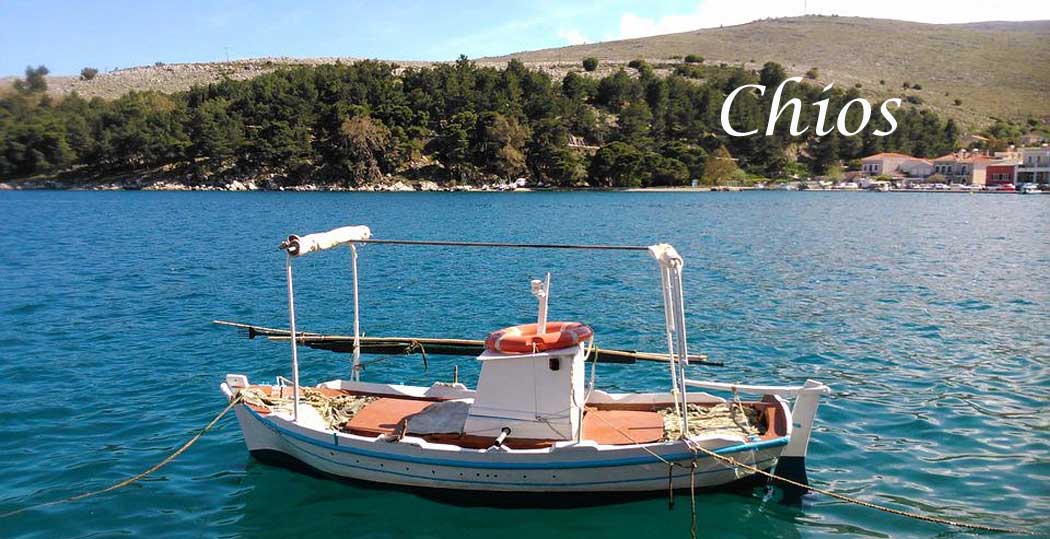History of Chios
Prehistoric times
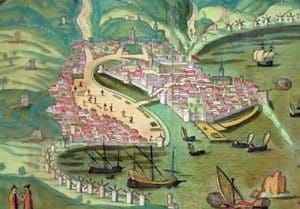
Scholars’ conclusions for the time were that residential facilities were small and unstable. The British School of Athens under the management of the archaeologist Sinclair Hood began the excavations at Emporios in the three years 1952 – 1955 and discovered a lot of information about its prehistoric period.
The Hellenic Archaeological Service started new excavations from 1970 but their results remain unpublished. The surprising uniformity of the houses that existed at that time in Emporio leads to the conclusion that there were no social distinctions in the settlement and a ruling class, the main occupations of the inhabitants were agriculture and animal husbandry.
The oldest inhabitants of the island were the Pelasgians, who arrived from Thessaly, the Kares and the Leleges. Later the Avantes settled and finally the Ionians. These peoples lived for millennia in Chios and from their mixing with the Dorians, who subjugated and assimilated them, the population of Chios came from.
For the Pelasgians, Strabo mentions characteristically: “The inhabitants of Chios, themselves Pelasgians, came from Thetalia”. Similar information is given by Eustathius, Menekrates and Elaitis.
Regarding the origin of the Pelasgians and their relations with other peoples, various theories have been formulated by ancient authors, but they are contradictory. However, it is certain that the Pelasgians preceded the Dorians and were probably Indo-European.
We are informed about the presence of the Avants by Herodotus, who mentions that they started from Evia and settled Chios. According to Aristotle, their name comes from the city of Ava in Phocis, from which Thracian settlers moved to Evia.
A reference to the Cares is made by Strabo, who mentions that the Cares occupied the area from Miletos to the beach of Ephesus. He also mentions that the Leleges lived on the islands of Chios and Samos, as well as the Kares and were later expelled by the Ionians.
According to Greek tradition, the Kares were previously called Leleges and lived in the Aegean islands as subjects of Minos. Unfortunately, the information is confusing and that is why we cannot determine the origin of the peoples, as well as the time of their settlement and stay on the island.
Bronze Age
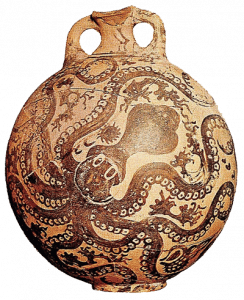
The archaeological site of Emporio is a typical example of a coastal settlement, whose economy was based on animal husbandry, fishing and hunting. The ten clearly distinguishable layers from the excavations at Emporios cover the time period 6000 BC. to the end of the early Bronze Age (2000 BC).
The main period of the Bronze Age (2800-1100 BC) is characterized by the use of metals, a better division of labor and the establishment of fortified urban centers.
In Emporio, a settlement was originally founded in the southern part of the port, which later expanded to the top of the Acropolis hill and was fortified with a stone wall. In the middle of the 3rd millennium, Emporio was destroyed by fire and rebuilt, becoming a remarkable urban center.
During the first centuries of the Middle Bronze Age (Middle Helladic 1900 – 1600 BC) a new wave of invaders overwhelms the Aegean. Researchers refer to them as Achaeans and others as Ionians, who will absorb the Minoan civilization and transform it into Mycenaean.
The Late Bronze Age (1600-1100 BC) is very important, because for the first time it was colonized by Greek races. Because the metropolis of this civilization was Mycenae, that is why it was called the Mycenaean civilization.
The Mycenaean period is characterized by the growth of settlements and the spread of trade with the Mycenaean world. The Mycenaean vessels found in Emporios prove the direct trade relations between Chios and Crete.
The Mycenaean settlement of Emporio was abandoned or destroyed at the beginning of the 11th century BC. century and remained uninhabited and deserted for at least three centuries. When the new settlement was actually founded, it was built on the western slopes of the hill of Prophet Ilias.
The colonization of Chios
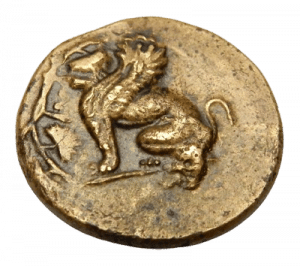
The Ionians distinguished themselves as merchants and sailors, as well as pioneers in letters and the arts. Many factors contributed to this, such as the fertile soil, its geographical location and its large ports.
It is noteworthy that in ancient times the agricultural products of Chios were famous, such as its wine which reached the ends of the world. Apart from the Ionians there are indications that Aeolian settlers settled in the northern part of the island, coming from Lesbos.
The colonists who settled on the coasts of Asia Minor and the neighboring islands belonged to the Greek races that developed the Mycenaean civilization, whose cultural elements they brought from their homelands.
Of these the most important were the epics. This is how the Homeric Epics were born, the most important creations of Greek and European literature, the Iliad and the Odyssey, works of the poet Homer.
Chios after colonization begins to play an important historical role. Apart from Chios, the Ionians had conquered Samos and ten other cities of Asia Minor, thus establishing the Dodecapolis of the Ionians.
Soon the cities that had been conquered by the Ionians had created a federation, while they also played an important role in the development of Greek civilization.
In the 9th century BC the presence of Euboeans and Cypriots is attested on the island by ceramics, the Phoenicians were found at the same time in Erythres Ionia, the commercial competitor of Chios on the opposite coast of Asia Minor.
The Syrian philosopher Pherekydis writes that the first inhabitants of the island were the Leleges, an insular Greek race that had submitted to the Minoan civilization, expelled by the Ionians.[7]
Chios was one of the 12 original city-states that participated in the Ionian League. Chios from the beginning of the 7th century was one of the first cities to mint coins with the sphinx as a symbol, this tradition was maintained for about 900 years.
Political system
Chios was one of the first Greek cities that from the 7th century BC. they overthrew the kingship and created a developed political system, where power was vested in the highest class of citizens. They had many privileges and brought together all the political and religious authorities of the city, regulating everything related to religion and interpreting the laws.
In the 6th century BC Chios had a democratic polity similar to that established by Solon the Athenian, all citizens voting in assemblies democratically electing their rulers who were known as “Mayors”.
The king still existed, but the power was mainly held by the mayor, the head of the municipality, as well as the parliament, which consisted of 50 men from each tribe. The mayor and the council usually met once a month and their authority was administrative and judicial.
Chios developed into one of the most important cities of ancient times, with a population of 60-80,000 inhabitants and at the same time a great naval power. It is typical that Chiotian amphorae have been found in some parts of Russia and also in Northern Egypt.
In fact, at the invitation of the Philhellenic pharaoh Amasis, Chiot mercenaries settled in the latter, establishing a colony of the same name, probably near Naucratis. Chios developed into one of the largest wine exporting points, the so-called Ariusian wine, which was known for its excellent quality but also for being one of the most expensive wines in Greece at the time.
The polity that existed during the Ionian rule is considered a democracy in its first steps. This period came to an end when Chios was conquered by the Persians. Chios was submitted to the Achaemenid Empire (546 BC).[12]
The island took an active part in the Ionian Revolt against the Persians (499 BC) and its fleet formed the bulk of the Greek forces in the naval battle of Ladis in which the Persians defeated the rebels.
The Chiotes continued to defend themselves against the Persians even after Samos and all the other cities retreated but were eventually forced to submit to Persian rule.
After the defeat of the Persians in the battle of Mykalis, Chios was freed from Persian rule (479 BC). It then joined the Athenian Alliance of Delos as one of the few city-states that did not pay servitude to Athens but were obliged to supply the alliance with ships.
In the 5th and 4th centuries BC the population on the entire island is estimated based on the finds found in the Necropolis at 500,000 inhabitants. The great majority of the island’s inhabitants lived around the Necropolis.
When the Peloponnesian War broke out (412 BC) Chios rebelled against Athens, the Athenians besieged it but lifted the siege when the Spartans came to defend it. Chios participated in the 4th century BC. in the Second Athenian Alliance but rebelled again against Athens when the First Allied War broke out (357 – 355 BC), since then it remained independent until the Macedonian conquest.
Chios of the Alexandrian era
In the spring of 334 BC, when Alexander started from Pella, with the aim of conquering the Persian Empire, in Chios the power was held by an oligarchy imposed by Persia.
That is why, after the victory of the Macedonians at Graniko, Alexander sent the general Alcimachus to expel the pro-Persian oligarchies from the islands and replace them with democratic polities.
In Chios there was a strong pro-Macedonian party, whose representatives were democratic citizens, while the oligarchy supported Persia. Alexander showed an interest in Chios and made personal friendships with prominent Chios citizens (such as Theopompos). Chios took a pro-Macedonian stance from the beginning of the Macedonian campaign against the Persians and sided with them.
In 88 BC, during the Mithridatic Wars, Chios took a pro-Roman stance. Therefore, the king of Pontus Mithridates VI Eupator occupied and plundered the island displacing its inhabitants, who he replaced with Pontian settlers. At the same time, he renamed the island “Bereniki”, in honor of his third wife who was a Chiotissa. However, within a short period of time, the Roman occupation of Chios followed and its declaration as an allied territory.
Byzantine times
When the Roman Empire was divided (395) Chios remained for six centuries in the Byzantine Empire, the Chiots allied themselves with the Romans and initially enjoyed some privileges. But over the years, the Romans removed many works of art from the island, while some destructive earthquakes followed.
After the fall of the Roman Empire and the spread of Christianity, Chios was for many centuries under the rule of the Byzantine Empire, except for some short periods of time when it was conquered by the Saracens of Khandaka (present-day Heraklion).
When the Byzantine Empire regained control of Chios, it recognized the important strategic position of the island. Thus began its fortification in the 11th century and the construction of the Castle of Chios.
Emperor Constantine I the Gladiator started the construction of the New Monastery on the spot where the icon of the Virgin had been found (1042). In the period (1090 – 1097) the Turkish emir Tzahas who ruled the region of Smyrna captured the island in his campaign on the Aegean coast.
The Turks were persecuted by the Byzantines in cooperation with the Latins who participated in the First Crusade, the island returned to the Greeks and Admiral Konstantinos Dalassinos was placed in command.
Conquest of the Crusaders
The stability that followed was ended when Byzantium was dissolved by the Franks in the Fourth Crusade and the Latin Empire was created centered on Constantinople (1204).
The Greek territory was divided among the Latins and the possession of Chios passed to the Republic of Venice, the defeats that followed for the Latins quickly brought the return of the island to the Byzantines (1225).
The Byzantines had little control over the island and it was transferred by the Treaty of Nymphaeum to the Republic of Genoa (1261).
This was followed by frequent raids by Turkish pirates from the emirates established in Asia Minor, as well as by the naval forces of the Kingdom of Sicily under Rogero di Lauria and Rogero de Flor.
Ottoman period
During the Ottoman period the government and the collection of taxes remained in the hands of the Greeks, the Turkish garrison was small. Latin and Ottoman documents record a small number of Jews around 1049. The first Greek-Jews were brought to the island by the Romans, while at the end of the 15th century Sephardic exiles from the Iberian Peninsula settled.
The enormous wealth and prosperity of the island was based on the mastic trade, the sultan with only minimal taxation was able to make great profits in his coffers, Chios was for the Ottomans one of the most important provinces in their empire.
A few years after the Ottoman conquest, the Jesuit monks appeared on the island, who presented educational, but also proselytizing activity. From the middle of the 18th century, a state of economic prosperity prevailed in Chios. The development of handicrafts, the trade in silk fabrics and the cultivation of mastic greatly contributed to this. At the same time, it was one of the most important spiritual centers of Hellenism.
According to statistics from the Kapodistrian era, before the Revolution there were approximately 120,000 Christians, 1,100 Muslims and 70 Jews living in Chios. Based on an earlier measurement carried out by the actions of the Metropolitan of Chios, Platon Fragiadis, and dated some time before the Revolution, the population of the island did not exceed 80,000 inhabitants. At the same time, several Chiots were settled in Smyrna, but also in countries of Central and Western Europe where they were active as merchants.
The uprising of Chios
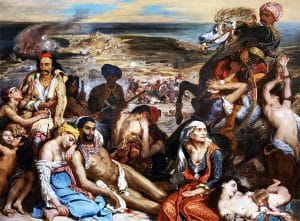
A reliable source for the events before and during the massacre of 1822 is considered to be the report of the French consul Celeste Etienne David to his superiors, although he is judged to be pro-Turkish. On April 27- May 6, a fleet from Hydra island of 28 ships landed at the Pasha’s Fountain and called the Chiots to rise up.
A Turkish-Cretan ship was sunk and all on board were killed. The next day the ships ran aground near Livadia, a mile and a half from the city, and rebels came ashore calling on the villagers to rise.
But the latter avoided them and moved away. Topazis, on the other hand, states that the villagers were willing to rebel.
A man of the rank and file brought the message to Topazis that 400 people were ready to take up arms, but they wanted men from the fleet to disembark to rouse them. In July ’21, Ioannis Rallis, former merchant in Odessa, had taken over the organization of the rebellion. But Chiot merchants of the Cyclades convinced him that this operation was untimely and dangerous, something to which Ypsilantis also agreed.
These movements alarmed the Turks, who collected 40 hostages from the city, among them the five aldermen of the Community, the archbishop and other prominent persons. The rebel fleet, having failed to rouse the inhabitants, sailed after six days. But he sank a Turkish ship carrying pilgrims to Mecca. Philemon states that those arrested were exterminated in revenge for the hanging of the two patriarchs and other high priests in Constantinople.
However, some Turks were rescued by the Chios villagers. At that time, orders arrived from Constantinople calling on the Turkish Authorities to prepare for defense and to consider the Chiots as enemies.
From that moment, violence and terror began to be inflicted on the residents. About 96,000 bushels of wheat were seized and 600 soldiers were called in from Asia.
For their maintenance, Chios were forced to pay 30,000 grosci per month. In order to deepen the moat of the castle, the Chiots did forced labor. The soldiers daily carried out robberies and murders in the city and the villages. At the same time, a firman came that imposed the enlistment of 250 Chiots for the Ottoman fleet.
The cruel Vahit Pasha was appointed military commander in Chios. His cruelty is described by foreigners who lived in Chios. Among other things, it is said that Vahit beheaded a provost of the Mastichohoria to celebrate the birth of his son. Vahit Pasha later also recorded the history of the events of the revolution and its massacre.
Liberation
Chios was liberated in 1912 during the Balkan Wars: specifically, on November 11 the Greek fleet approached the island, while the refusal of the Turkish garrison to surrender was followed by the landing of Greek forces.
The Turks initially withdrew to Karyes and then to the mountains of Chios where they resisted until December 20, when they surrendered. Detachments of local Greek armed forces that had been secretly organized since the beginning of the same year also took an active part in the military operations[54].
The peace treaty was signed between the Turkish Zichni Bey and the infantry captain E. Bernados, who represented the Greek forces. In this way Chios was handed over to the Greeks. The island had remained under Turkish occupation for 356 years. After the Asia Minor Disaster of 1922, many Greeks fled to the island and created new settlements such as Varvasi.
